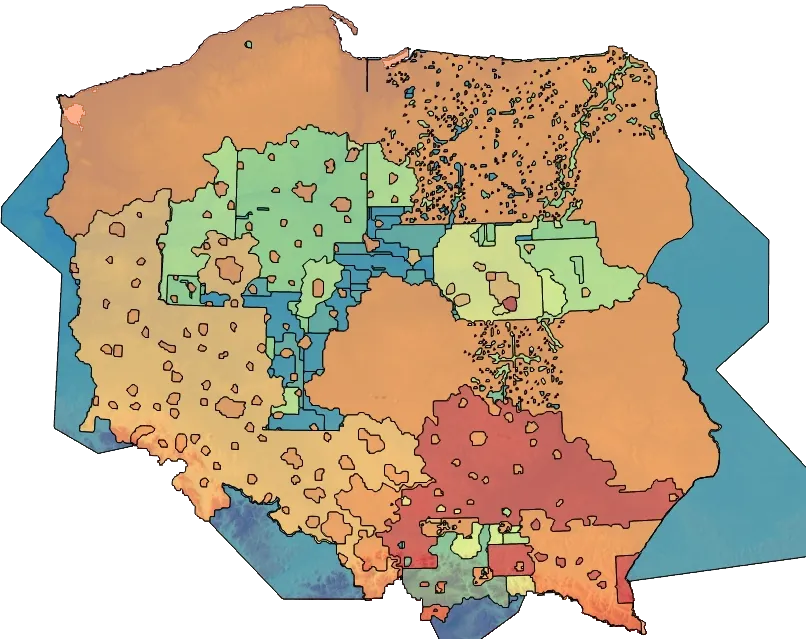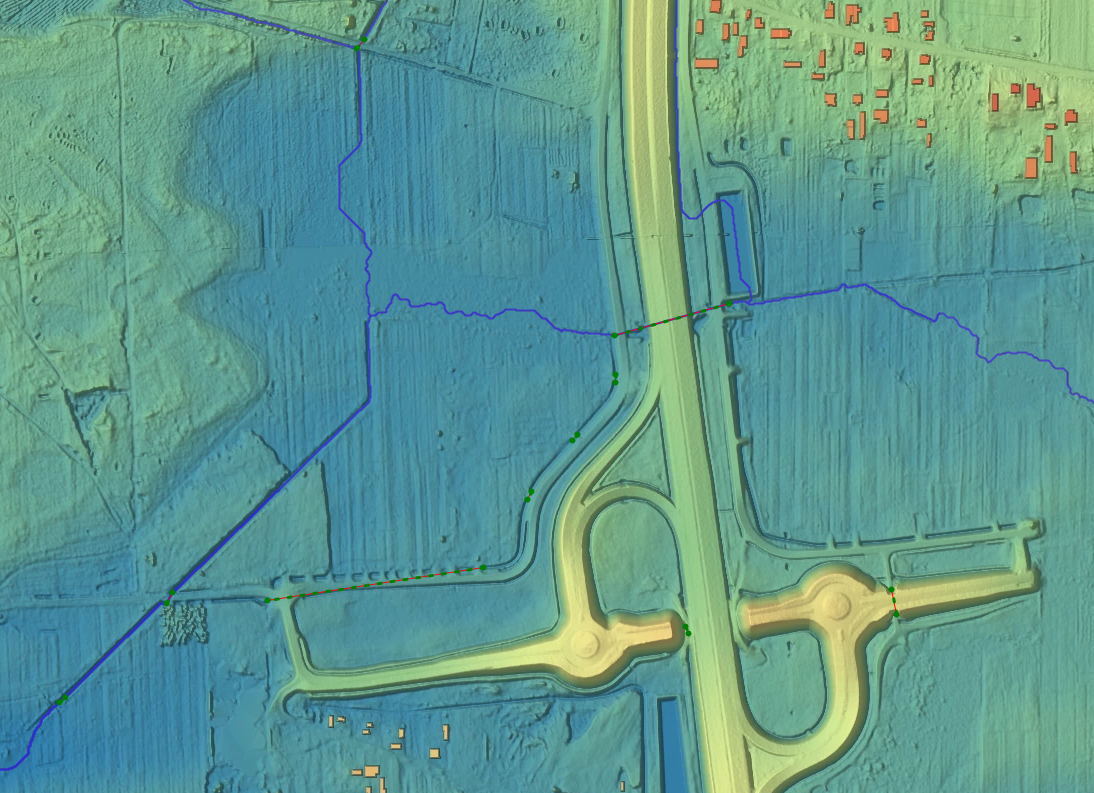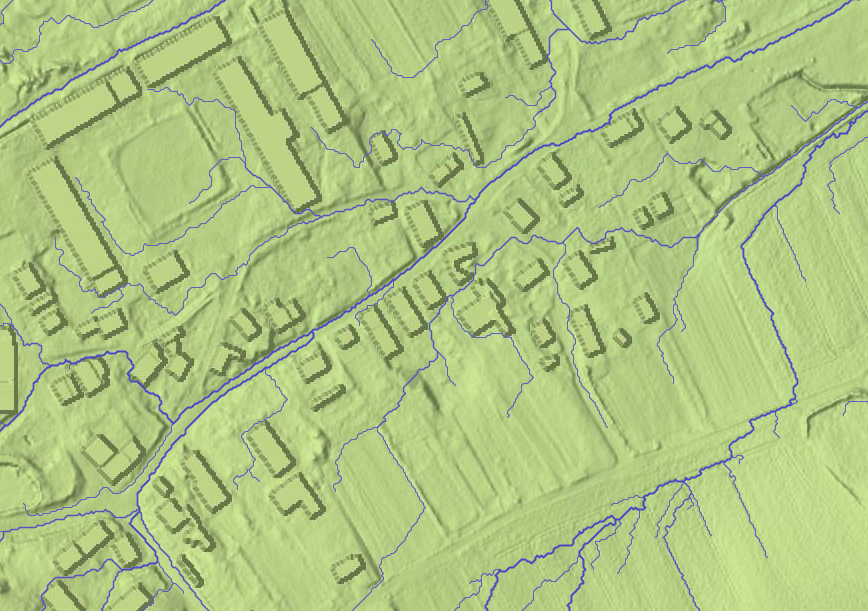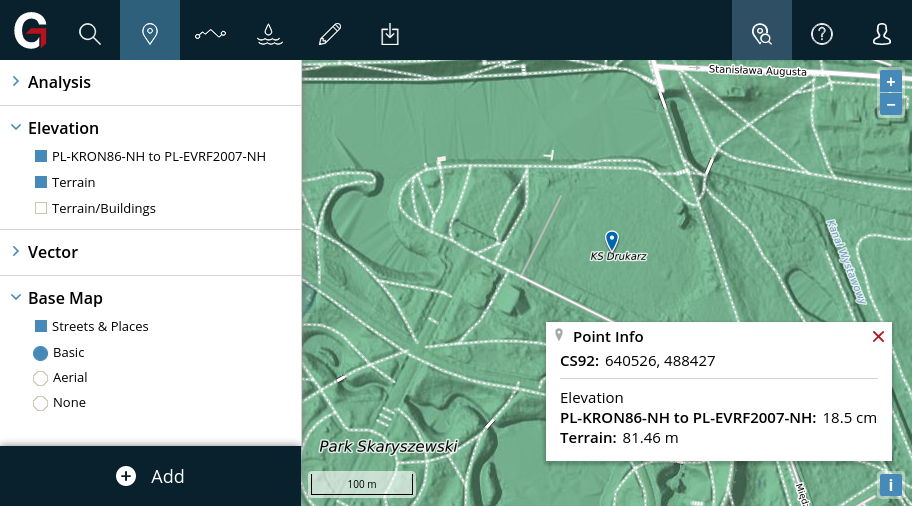-
Documentation
-
About
- Getting Started & Use Cases
- Support
-
What's New
- Simplified tools for designing with contour lines
- DynamicFlood: Organize and understand your computations
- Modelling stormwater networks in Scalgo Live
- National US high-resolution land cover map
- New functionality for CAD users!
- DynamicFlood: Cleaning up rain events and adding historical rains, now available in France
- National Polish high-resolution land cover map
- DynamicFlood now available in Great Britain
- Global contour maps now available
- Updated Swedish topsoil map
- Scalgo Live Global theme is updated with new elevation and land cover data
- Detailed culvert information in DynamicFlood
- No more Lantmäteriet fees for Swedish data
- Depth-dependent surface roughness (Manning) in DynamicFlood
- Detailed land cover map for all of Great Britain
- National French high-resolution land cover map
- Work with multiple features simultaneously in the canvas
- Spill points on flash flood map and depression map
- New surface roughness (Manning) parameters for DynamicFlood
- Workspace and Modelspace sharing updates
- Regionally varying rain in DynamicFlood Sweden
- Veden imeytyminen nyt osana rankkasadeanalyysejä
- Use Scalgo Live anywhere in the world
- DynamicFlood: Live model speed info and regionally-varying rain events
- Sea-level rise: Download building flooding information
- Detailed contour maps and editable buildings in Workspaces
- New in Modelspaces: Explore hydrodynamic simulations and visualise the dynamics of flow velocity
- National German high-resolution land cover map
- Specify basins and protrusions by drawing their outer boundary
- Simplified path features
- National Norwegian high-resolution land cover map
- Organise and communicate on a digital canvas
- New sidebar to help organize your analyses and queries
- Sliding contours
- Ny skyfallsanalys och en ännu bättre marktäckekarta
- New land cover map for Finland
- Depths in the depression map
- New Danish land cover map with more classes
- National Swedish High-Resolution Impervious Surface Mapping
- Watershed tool updated with even better descriptions of catchment characteristics
- National Flash Flood Map with Infiltration and Drainage for Denmark
- Add your own WMS layers to SCALGO Live
- Enriched building data in Denmark
- National hydrological corrections and Land Cover for Poland
- National hydrological corrections for Norway
- Updated Impervious Surface Mapping for Denmark
- National hydrological corrections and updated local data for Finland
- Fast and intuitive tools to work with infiltration and land use
- Improvements to vector imports and exports
- National Danish groundwater model
- New Sweden high-resolution model
- New powerful depression map and more analyses visualization options
- Introducing Modelspaces: Get your hydrodynamic models into SCALGO Live
- Use case videos
- Access a EA flood maps inside SCALGO Live
- Improved map export
- New powerful ways to edit the elevation model
- Better coloring of flooding layers and sea-level depth filtering
- National Danish High-Resolution Impervious Surface Mapping
- National access for local and regional organizations
- Simpler, more powerful downloads
- Customize Layer Transparency
- Hydrological corrections and new data in Sweden
- Improved export functionality
- Access a wide range of authorative data inside SCALGO Live
- Importing VASP data
- Measure gradients, undo edits, and Norway updates
- New terrain edit features, soil balance information and much more...
- Browse historical orthophotos in SCALGO Live
- Emergency planning with sea-level rise from national forecast data
- Detailed information about watershed composition
- Better styling of imported vector layers
- New Danish Elevation Model
- Work with gradients in the profile widget
- Flood risk screening from rivers and flow paths
- New workspace tool: Raise and lower terrain uniformly
- Importing LandXML TINs, LAS point clouds
- New model in Sweden
- Side slopes on workspace features
- Drag and drop enhancements
- Swedish contour maps
- Subsurface basins and sewage drains in workspaces
- New Interface
- Volume information for watersheds and flow paths
- New powerful tool for emergency response and coastal flood prevention
- Denmark: New flash flood map
- Sweden: Geodatasamverkan setting for Swedish users
- Import custom terrain models
- New Hydrological Corrections
- Elevation contours now available
- Download orthophotos as JPEG and PNG
- Subsurface structures in workspace
- Sea-levels in terrain profiles
- Updated orthophotos
- Models and analysis update
- User interface updates
- User interface updates
- GeoDanmark/FOT data, Matrikelkortet now available
- New flash flood map
- Download of risk polygons
- Updated orthophotos
- Nationwide hydrology on the new DHM/2015 model now available
- New flash flood map computation available with watershed download
- DHM/2015 variants and sea-levels now available nationwide
- DHM/2015 now available nationwide
- Hydrology on the new DHM/2015 model now available
- New DHM/2015 Model - now with buildings
- New DHM Model
- Watershed Tool
- Ad hoc layers
- Nationwide contour maps for all countries
- Single Sign-On
- Data Fees
- User Interface
- Canvas
- Analysis
- Workspaces
- Modelspaces
- Working with CAD data
- Core+ DynamicFlood
- Core+ NatureInsight
- Core+ PropertyResilience
- Streams and Flow
- Physical Properties
- Country Specific
-
About
Country Specific – Poland
Digital Terrain Model
| Cell Size | 1x1 m |
| Coordinate System | PUWG1992 |
| Vertical Reference | PL-EVRF2007-NH |
| Flight Years | 2011–now |
Our elevation model of Poland is based primarily on the Digital Terrain Model (pl. Numeryczny Model Terenu) made available by the Head Office of Geodesy and Cartography (pl. GUGiK). We strive to keep our model up to date with the latest sources.
Elevation measurements in Poland generally use either the Kronsztadt 86 (PL-KRON86-NH) or European Vertical Reference Frame (PL-EVRF2007-NH) system. Since the elevation model from GUGiK is published in a mixture of PL-KRON86-NH and PL-EVRF2007-NH, Scalgo has applied a correction so that all data is in the same vertical reference system, namely PL-EVRF2007-NH.
In order to use an elevation model for hydrological analysis such as watershed and flow accumulation computations, two primary conditions need to be met:
- The upstream area of any river should be covered by the elevation model.
- Structures on top of the terrain should only be present in case they actually block water from flowing under or through them.
Below, we discuss how we process the model to fulfill these conditions as well as possible.
Extensions
In order to cover all of Poland including upstream areas of all rivers, we have extended the open LIDAR data from the government of Poland with the SRTM v3 1-arc-second DEM, which has a resolution of approximately 30 meter per pixel.
A full overview of when the LIDAR elevation data in Poland was acquired is available by clicking the gear icon next to an elevation layer, selecting the "Source" tab, and "Show source information".

Bridges, underpasses and hydrological corrections
Major bridges have generally been removed from the model, but for many smaller bridges and underpasses, additional hydrological corrections that allow water to flow through such structures may be necessary. Scalgo Live Poland includes a nationwide hydrological correction set based on layers from the GUGiK BDOT10k dataset. Corrections have been generated at locations where rivers intersect roads or railroads, as well as at river sections that overlap with culverts (przepust). Secondly, corrections have been generated at road overpasses and tunnels. Each correction thus follows a line in the BDOT10k river or road network, with end points adjusted to match the elevation model as well as possible. In places where the elevation model is already hydrologically corrected (e.g. at large bridges), corrections are not generated.
This data set is machine-generated, so some errors should be expected. However, since we only include corrections along known river and road lines, we believe it to be conservative in terms of water flow.
The set of corrections is available under the Hydrological Corrections category in the Library.
The national analyses use these corrections, and workspaces created using the predefined "Flash Flood Map" or "Sea-Level Rise" buttons
also include them by default. If you create a workspace through any
other means than the predefined buttons (e.g. if you upload your own
model), you can include corrections in that workspace through the
workspace Actions tab by clicking Import corrections, they will not be included automatically.

Buildings
Apart from vegetation and major bridges, also buildings have been removed from the terrain model during construction. When computing water flow paths, more realistic results are generally obtained when the elevation model does include buildings so water can be simulated to flow around them. In Scalgo Live, we accomplish this by adding buildings back into the model using a dataset of building footprints, where we raise all grid cells covered by a building to a height 10 meters above the highest terrain point within the building footprint. This model is called "Terrain/Buildings" and is the basis for all nationwide hydrological computations.
The building footprints are taken from the BDOT10k Buildings dataset.

Converting between vertical reference systems
In Scalgo Live, all elevation measurements are shown in the modern PL-EVRF2007-NH vertical reference system.
To convert from the older PL-KRON86-NH vertical reference system to PL-EVRF2007-NH, we have used a model of height differences published by GUGiK.
We have made the model of height differences available in Scalgo Live to make it possible to do conversions between the two systems as needed. To convert from PL-KRON86-NH to PL-EVRF2007-NH in a given location, use the Point Info tool to read the model difference at the location you are interested in. A measurement in PL-KRON86-NH generally gains between 13 cm and 21 cm when converted to PL-EVRF2007-NH.

Coastline
We have removed parts of the LIDAR model that are off the coast, as the data is generally unreliable. The coastline is taken from the BDOT10k "woda powierzchniowa" vector dataset.
Land cover
The Scalgo land cover map is available in Poland. For more information, please consult the land cover section of this documentation.
Base map and aerial photography
The default map view when you go to Scalgo Live shows an overview map from Mapbox. The street names and place labels are sourced from OpenStreetMap.
You also have the option of viewing an aerial photography map in standard resolution for the whole country, or a high-resolution aerial map covering part of the country, provided by GUGiK WMTS servers.